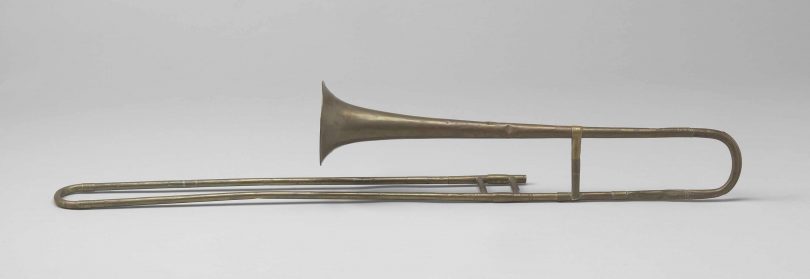Trombones come in different sizes, the length of the trombone, a Bb instrument, is around 9 feet. The instrument in the 7th position is between 13 and 14 feet long. The slide’s components (both inner and outer) have a consistent length. Whether the outer slide is in position 7 or not, both the inner and outer slides are of equal length which is about 27.5 inches or 70cm.
What is the length of the trombone’s tubing? It’s around 9 feet long.
What is the length of a trombone? The trombone has an overall length of 8 feet, but when it’s all put together, it’s about 150cm long.
How long is the trombone untwisted?
The tubing on a Bb tenor trombone is 108 inches (or 9 feet) from mouthpiece to bell if it were straightened out.
Trombones come in different sizes, and the length of the instrument can affect its sound. This makes them a versatile instrument for both classical and jazz music. A shorter trombone will have a brighter sound than a longer one, which is beneficial when playing in the upper part of the range where it is desirable to use less mouthpiece pressure on the lips.
This makes them ideal for young musicians, as their smaller size makes them lighter and more comfortable to hold. Some trombones have a trigger mechanism that allows notes outside of its normal range to be played by pushing down on a lever.
What’s the normal trombone’s size and weight?
The slide of a musical instrument is a straight tube that measures around 70 cm in length and is relatively thin (0.25 mm thick). There is a 0.1-millimeter gap between the outer and inner slides.
As a result, for the tubing to move smoothly, all four pipes (two for the outer slide and two for the inner slide) must be absolutely straight and parallel.
How long are trombone bell?
There are a variety of trombone bell sizes available, with the most common being 7 and 9 1/2 inches (18–23 cm). Trombones with smaller bores, such as those used in jazz, have smaller dimensions than those with larger bores, such as those commonly found in orchestra.
Bass trombone bells range from 9+ 1/2 to 10 + 1/2 in (27 cm) in size (24 cm). In either case, the bell can be made from a single piece of metal that has been hammered into the desired shape by means of a mandrel.
The bell’s edge is held in place by a small piece of metal known as bell wire. The sound quality of most bells is affected by whether or not they have a bit of bell wire on the edge. Even the bells of trombones can be made entirely of sterling silver.
Why do trombones have such long tubing
A smaller trombone will have a higher pitch than a larger one, and vice versa. This makes them a versatile instrument for both classical and jazz music. The length of the trombone can also affect its tone quality; a shorter trombone will have a brighter sound than a longer one.
This is because air flows faster through the shorter tube, resulting in less vibration and therefore more high-frequency content.
This makes them a versatile instrument for both classical and jazz music. A shorter trombone will have a brighter sound than a longer one, which is beneficial when playing in the upper part of the range where it is desirable to use less mouthpiece pressure on the lips.
A shorter trombone will have a brighter sound than a longer one, which is beneficial when playing in the upper part of the range where it is desirable to use less mouthpiece pressure on the lips. This makes them ideal for young musicians, as their smaller size makes them lighter and more comfortable to hold.
What are Trombone Bore Sizes?
The smallest trombones measure approximately 12.2 mm to 13 mm in diameter, with bore sizes ranging from .480″ to .510″. A small-bore trombone has a brighter sound and finer feel than a bigger bore instrument, but it lacks the power and presence of a larger bore instrument. they are often used in jazz ensembles.
A large bore trombone has a larger diameter of approximately 13.9 mm and is typically used in orchestras. A big-bore trombone produces a deeper, more mellow tone than a small-bore instrument and may produce higher volumes, but it requires more breath from the player.
Small bores are slightly smaller than medium bores, but larger than big bores.







